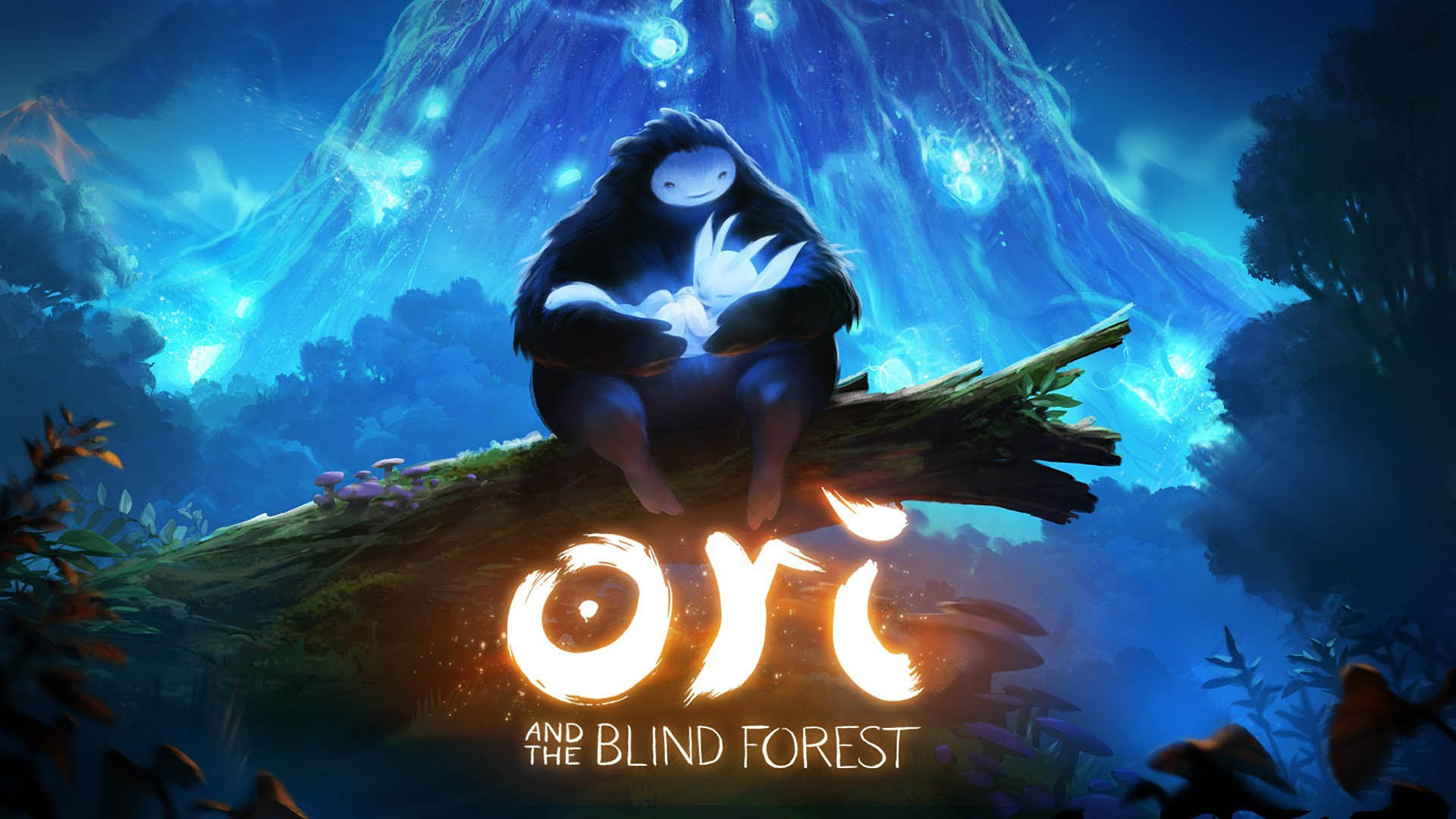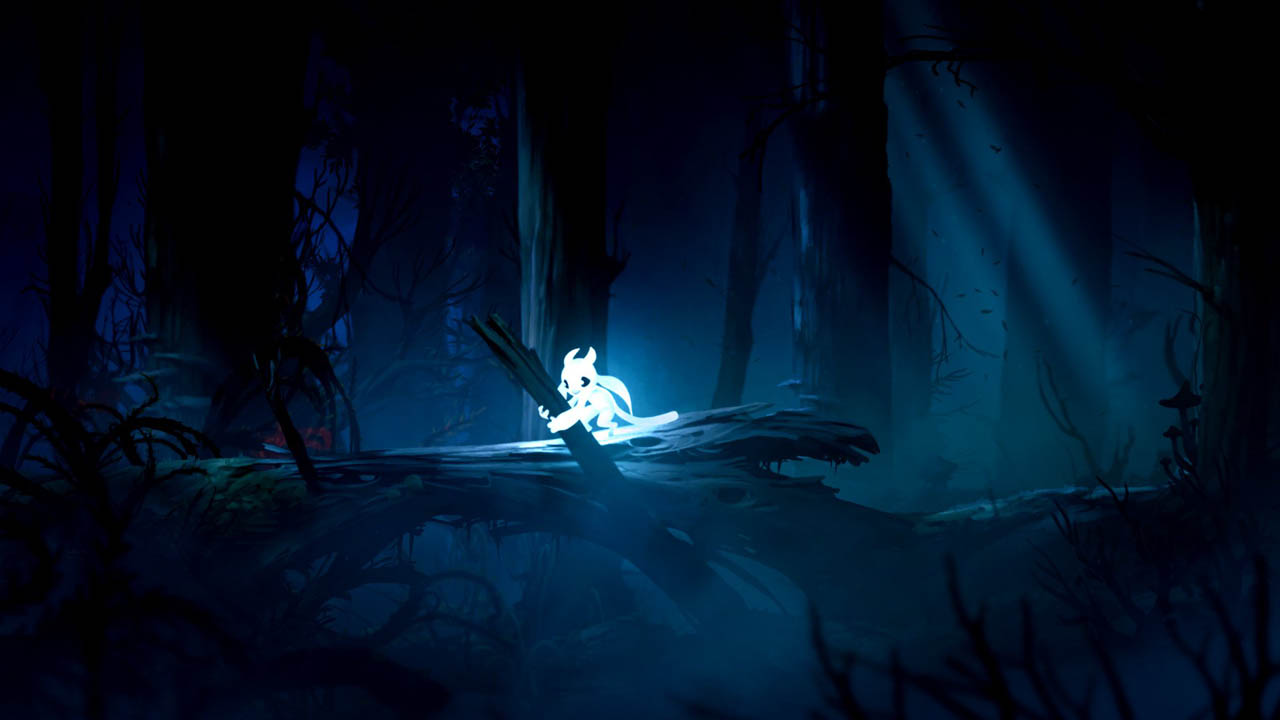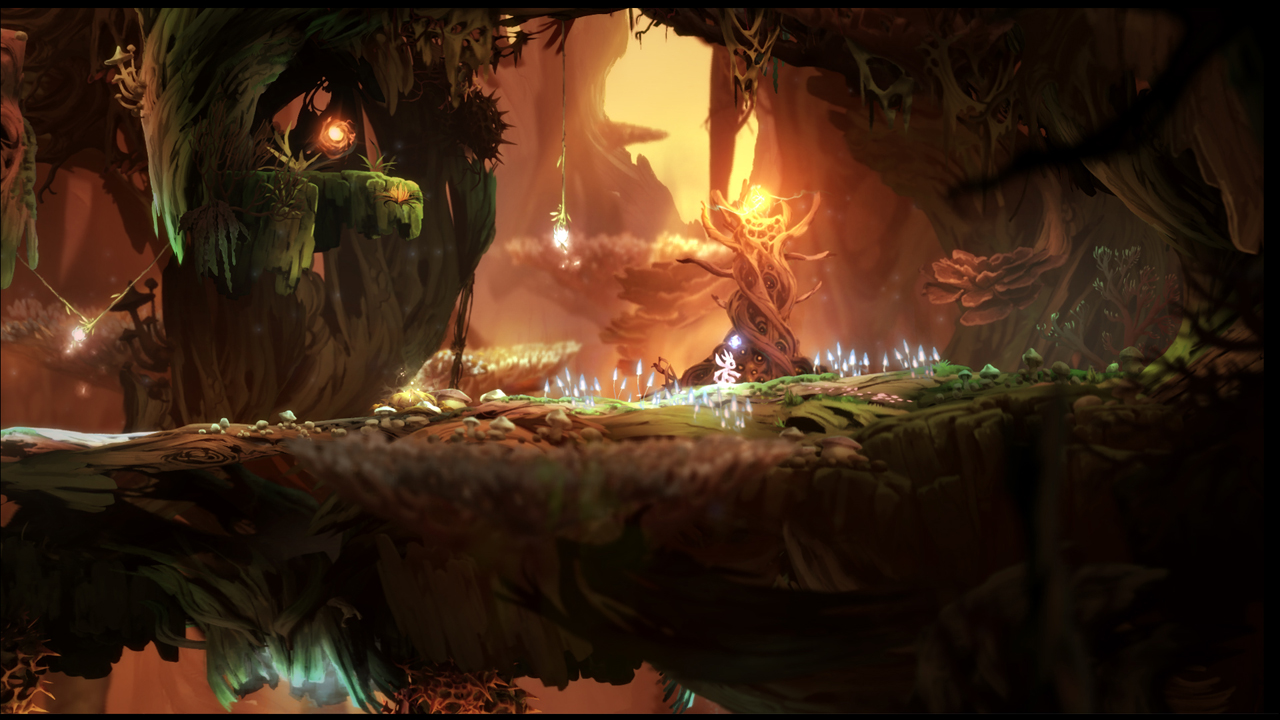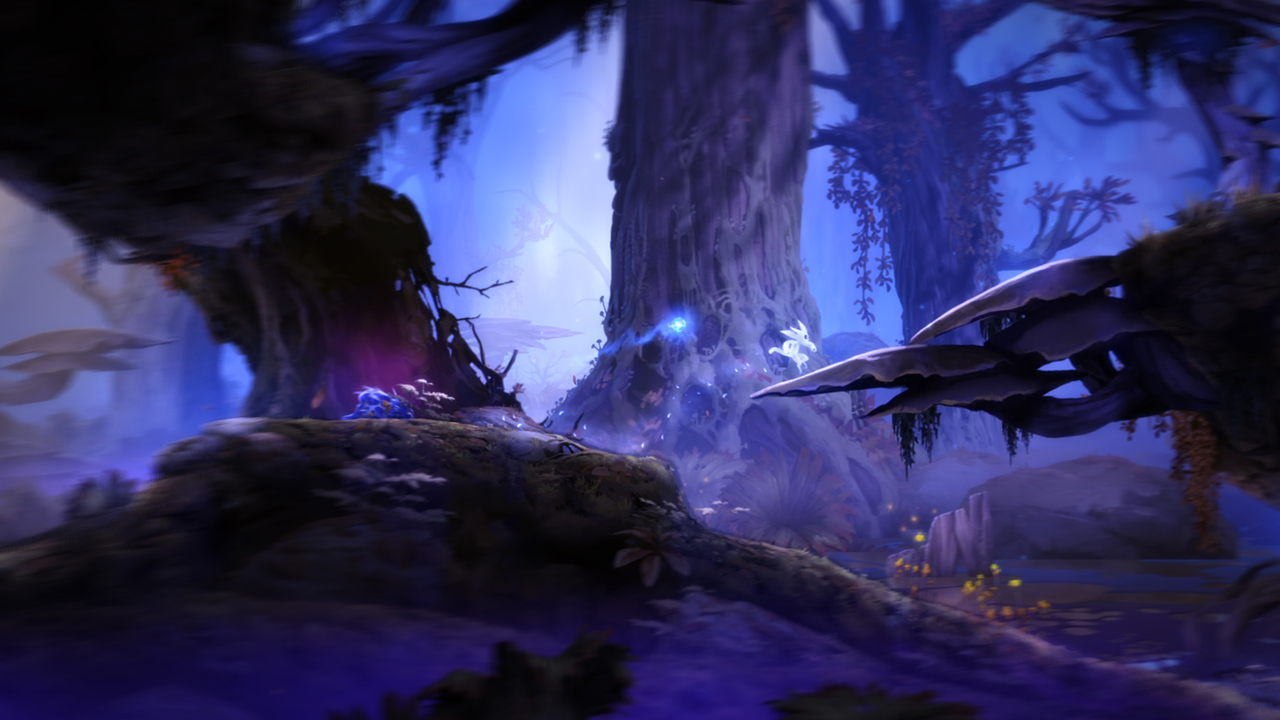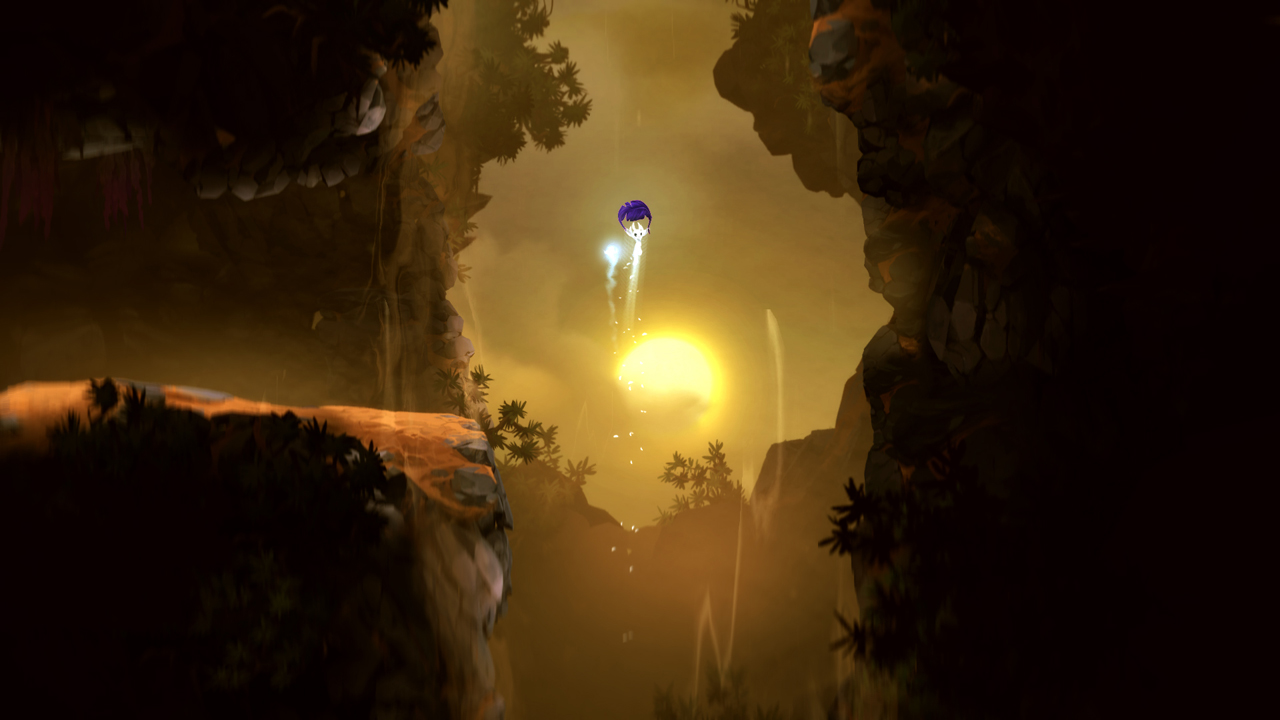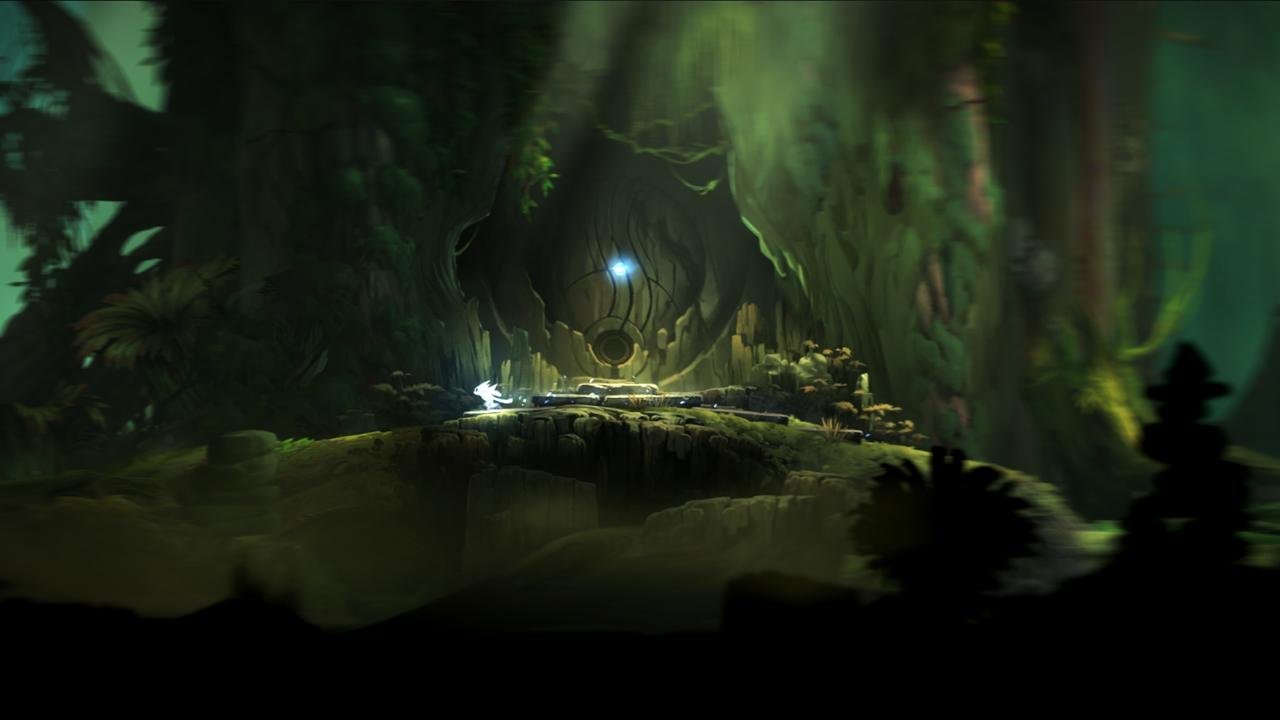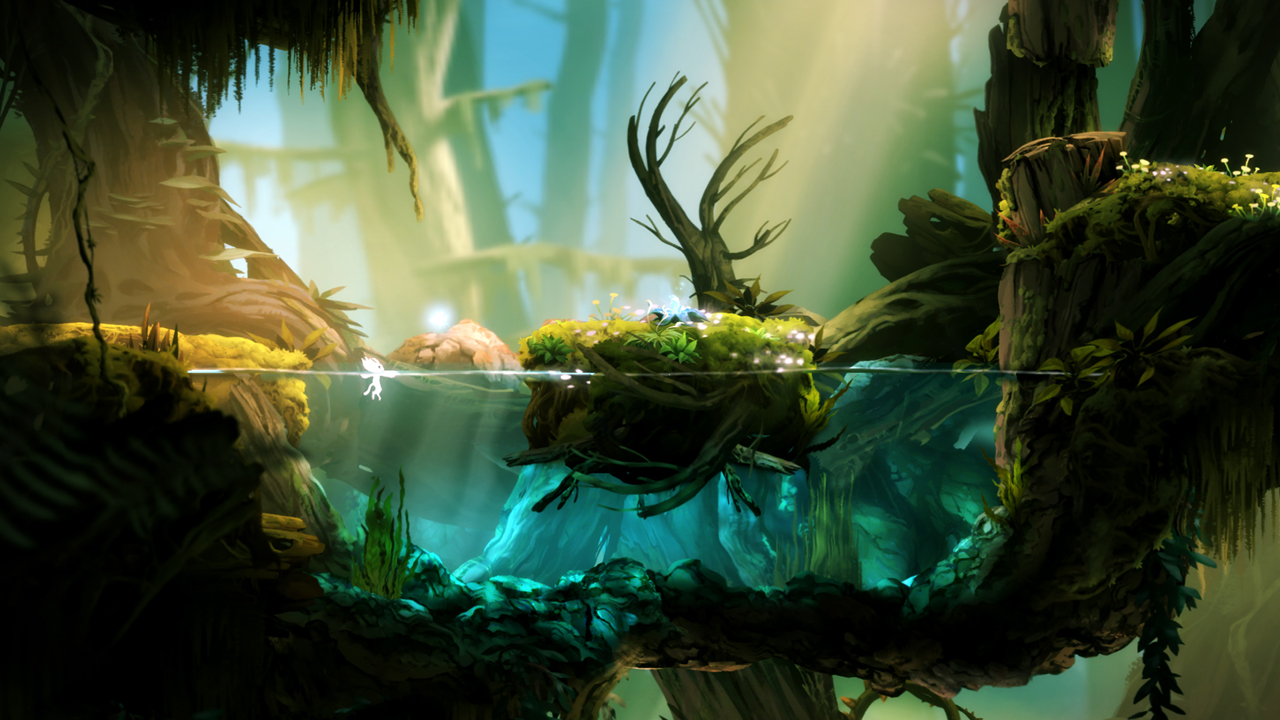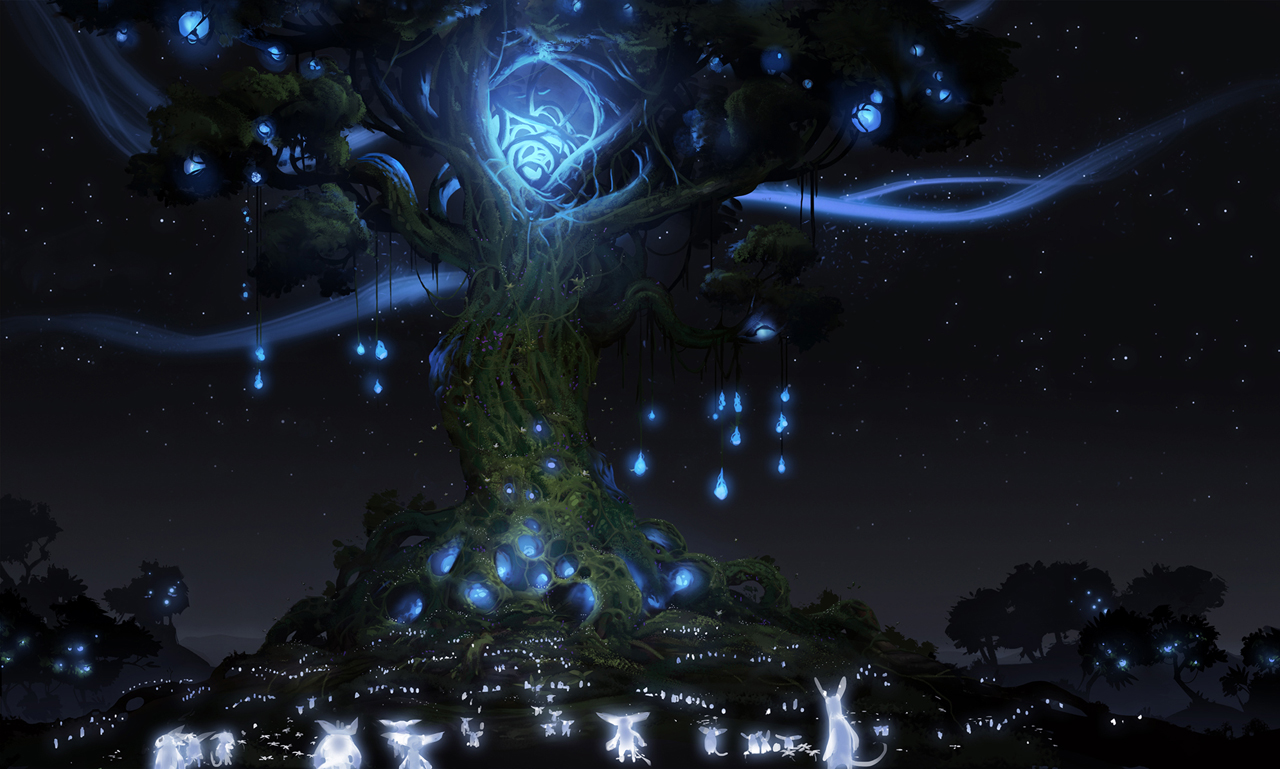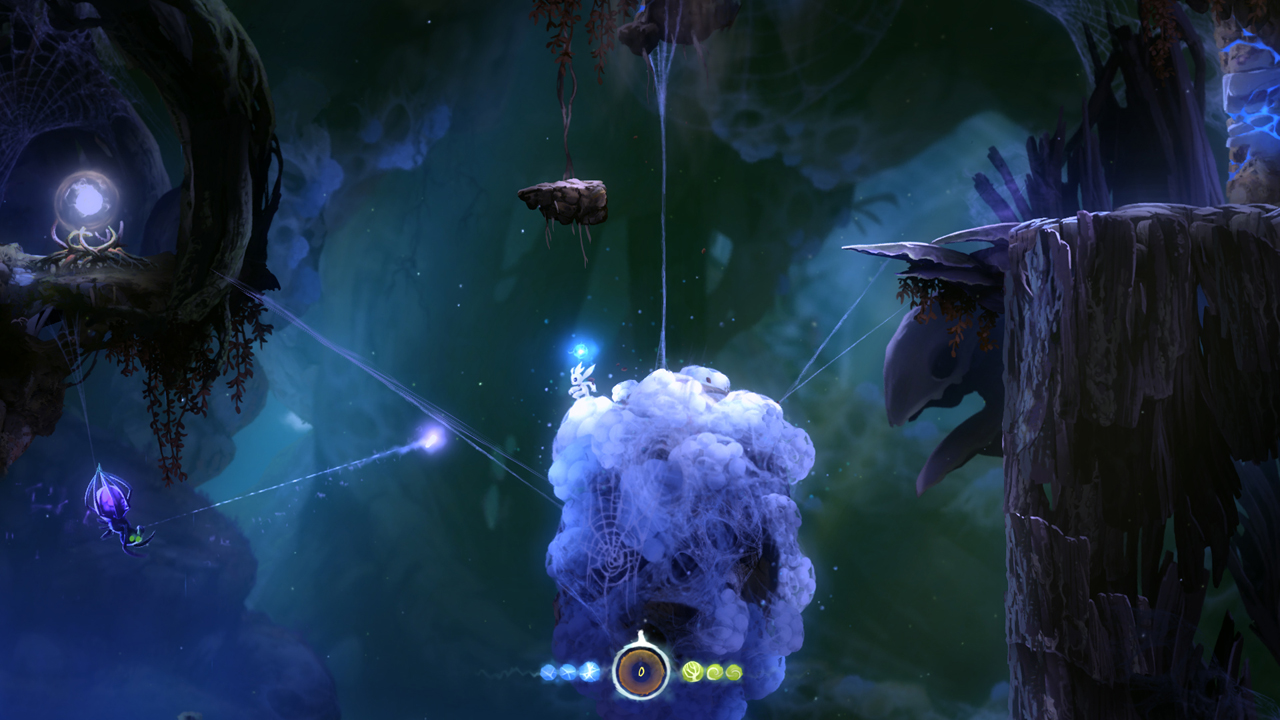Ori and the Blind Forest is one of the few games that managed to live up to and exceed my expectations. That isn’t to say my expectations were low. I remember being enthralled back at E3 2014 reveal trailer which showed off its amazing visuals and 2D platforming elements while giving hints of an emotional story.
Since then I’ve been anxious to get my hands on this interesting new IP developed by Moon Studios and published by Microsoft. In the end, the game managed to deliver on everything it teased at E3 whilst also providing fluid yet complex gameplay mechanics and really enjoyable puzzle aspects which I never really expected.
All of this had coated on top one of the thickest layers of polish I have encountered in a game.
I only wish to briefly touch on the story in Ori and the Blind Forest as it is definitely something best left to be experienced first-hand rather than read.
You play as Ori though, an adorable and unique creature with an epic adventure to undertake. The essence of the overarching quest you must undertake is somewhat stock standard however the story and the entire game built around it makes it a unique experience.
The focus of the gameplay is both on combat and platforming, both of which proves to be a very difficult task.
The combat is mostly done by your miniature firefly like companion Sein, as Ori is just too damn cute to get its hands too dirty.
The combat in the game is very difficult and is mostly focused on mobility. Standard attacks are typically done by mashing a button to get Sein to attack which is fairly straightforward. The difficult part is trying to dodge incoming enemies and their projectiles.
At the start, Ori is like a delicate little flower, dying very easily due to a low amount of health. This gives mobility a much bigger focus and makes the combat unforgiving which I really like.
As you progress however you unlock more health, upgrade your attacks and generally get more skillful at a faster rate than the increase in enemy difficultly. This resulted in Ori being a bit over powered towards the end of the game.
While this may have been a conscious design choice representing Ori’s growth on its journey, I felt that it partially takes away a major reason why I love the combat. It never stops it from being fun however.
There is also a leveling up system in place. Ability points are unlocked by killing enemies and finding bonus ability orbs.
These points can then be spent on a skill tree containing three paths which focus on different aspects of the game. Each upgrade is actually useful and I often found it difficult choosing which one to spend it on.
The other major part of the gameplay is of course platforming.
This involves your typical getting from point A to B and if you’re lucky finding bonus point C. Unlike combat though, this aspect of the game improves as you progress. New abilities are unlocked as you make your way through the main story.
These abilities making running and jumping around seem more fluid and adds considerable depth to it.
One unique aspect of Ori is use of energy. Energy is used to both open a save point, unlock some bonus areas as well as used for an explosive attack.
When used as a save point, it means that you respawn there when you die. As dying is a very common thing due to the difficulty of platforming and combat, rationing out the energy proves a difficult but enjoyable affair towards the start of the game.
Similar to health though, you end up unlocking more as you progress through the game and find bonus areas. Eventually you end up with an abundance of energy that you may freely use as you wish.
While this once again may be a design choice, it wasn’t one that I enjoyed.
The Level design in the game is excellent with much thought being put into every area.
The world is completely open with all parts of the world, except for a couple of times when you enter some ruins, accessible with no load screens. The game typically has you running backwards and forwards, using your new abilities to get to new places to progress the story or to reach bonus areas which reward you in an additional ability points, health or energy.
One thing the game never failed to do was to come up and perfectly implement new ideas for aspects such as puzzles, abilities, environments and general layout.
This made the game feel astonishingly polished and well-designed ensuring that the game never grows old. This was one of the few games that completely hooked me right until the end of its 6-10 hour life.
One problem I did have was the inability to jump back into the game post-credits.
While I understand the story had finished, being a completionist, I would have enjoyed going back in to find those last few hidden areas.
The artstyle in the game is absolutely gorgeous due to the vibrant colours and beautiful design. Every single moment felt picture perfect.
Areas also varied significantly yet never shied away from this stunning design. A simple glance of the cover art will show you what you are in for. The sound is, as you would expect from a game like this, exceptional and perfectly fitting.
With a gripping story, excellent gameplay and amazing sound and visuals, Ori and the Blind Forest delivers an experience anyone could enjoy.
Whether it is the tough but enjoyable nature of the combat and platform elements of the game or the emotional tale about Ori’s journey, you will be hooked from the moment you pick up the controller.
This is one game of 2015 which you shouldn’t miss.

